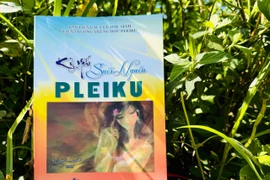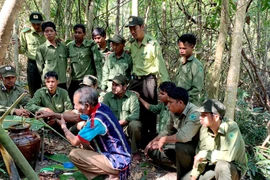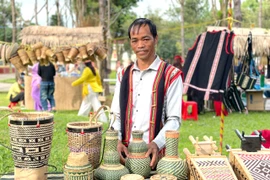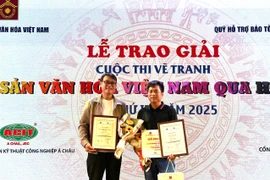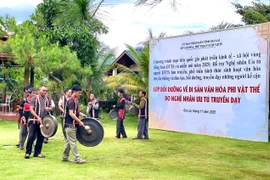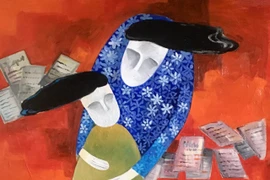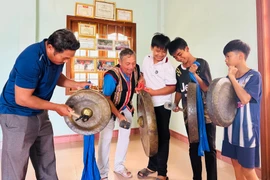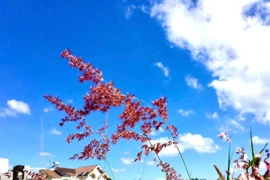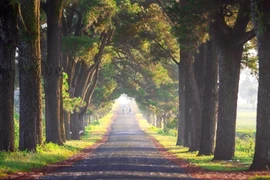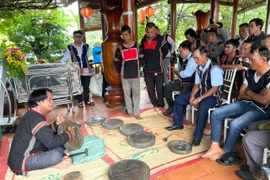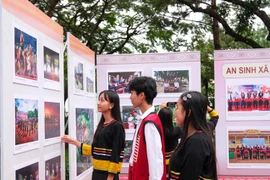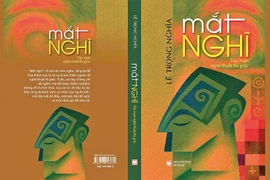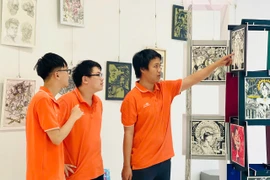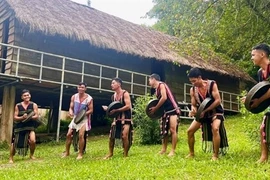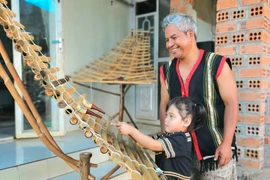Despite modernization, local artisans and elders remain committed to keeping these sounds alive. “Music is like the breath of our village,” says artisan Đinh Thị Ngành, 65, from T2 village. “Each song tells stories of labor, affection, and remembrance of Uncle Ho, teaching us to cherish the mountains, forests, and traditions of our ancestors.”
At dawn, mist rolls over the mountains as melodies rise from stilt houses where villagers gather. Artisans play instruments and sing traditional songs, such as “Lên rẫy” (To the fields), “Tình yêu đối đáp” (Love duet), and “Tiếng chiêng mùa khô” (Gong gounds of the dry season), melodies once passed down orally from grandmothers to children.
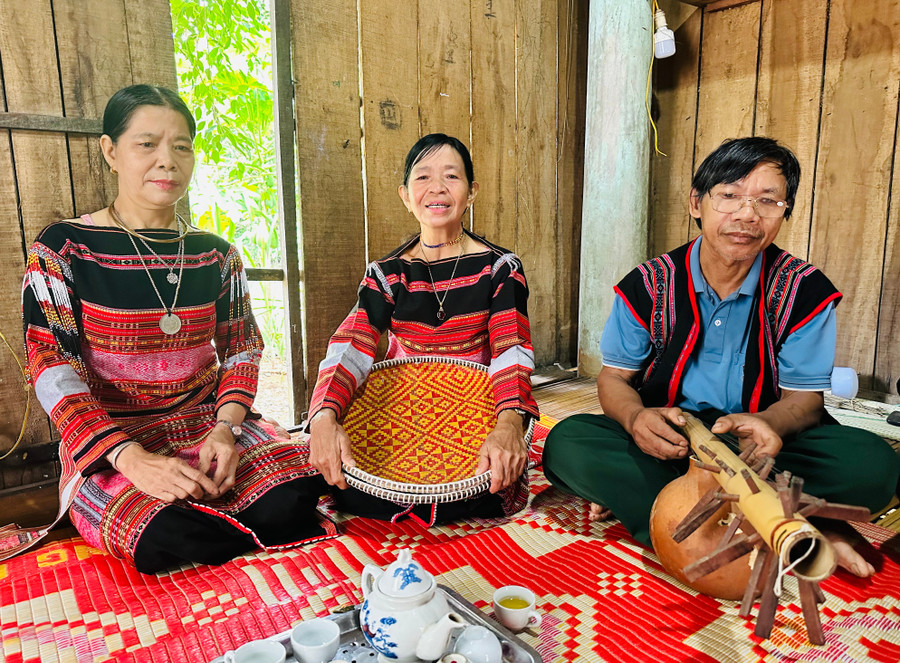
Reviving ancient sounds
Artisan Đinh Văn Rất, 63, demonstrates the making of Bahnar monochords, crafted from bamboo and bicycle cables or electric wires. Each instrument requires deep understanding of tonal structure and history. “The sound must resonate like the forest wind,” he explains.
Village elder Đinh Sinh, 84, adds that the k’ni—also known as the “love instrument”, demands exceptional skill: “You bow the string and open your mouth to let the sound vibrate. Even with modern instruments, we keep our traditional ones for rituals and festivals.”
Passing the legacy to the young
Artisans in Kim Son commune are increasingly concerned that younger generations are turning away from their musical roots. “If we don’t preserve these instruments, they will exist only in memory,” says Rất.
To prevent that loss, elders like Rất and Ngành teach children how to play the preng, pră, t’rưng, and gongs. They explain the meanings behind rhythms, songs, and ceremonies, ensuring cultural values remain part of daily life and festivals.
Younger villagers such as Đinh Điu, 33, and Đinh Văn Nghiêm, 30, have embraced this mission. “Each melody connects me with our people’s history and customs,” Nghiêm says. “Playing folk songs keeps our traditions and national pride alive.”
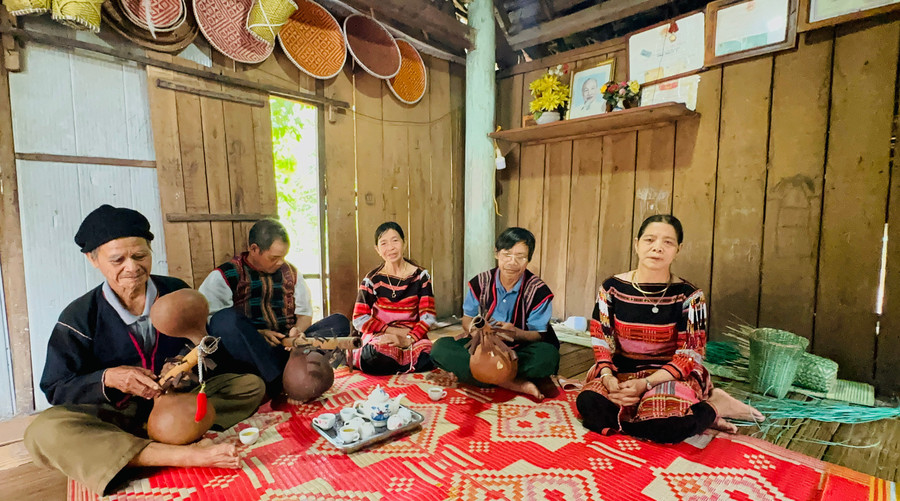
Cultural preservation efforts
According to Lê Quang Thắng, Head of the Department of Culture and Society of Kim Son commune, Bahnar folk music is “an essential part of spiritual life and a valuable asset in Vietnam’s cultural heritage.”
The commune has registered with Gia Lai’s Department of Culture, Sports and Tourism to create support mechanisms for artisans and expand classes in traditional music. Plans are underway to integrate folk music into festivals, schools, and community activities.
“When the younger generation experiences and cherishes these sounds, Bahnar melodies will continue to resonate through the mountains and forests,” Thắng says.












